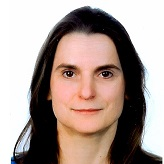Healing of Ligaments and Tendons: Tissue Engineering and Models 2.0
A special issue of International Journal of Molecular Sciences (ISSN 1422-0067). This special issue belongs to the section "Materials Science".
Deadline for manuscript submissions: closed (30 September 2023) | Viewed by 8056
Special Issue Editor
Interests: ligament/tendon; cartilage; tissue engineering and reconstruction
Special Issues, Collections and Topics in MDPI journals
Special Issue Information
Dear Colleagues,
This Special Issue on “Healing of Ligaments and Tendons: Tissue Engineering and Models” will cover a selection of recent research topics and current review articles related to novel insight in the healing of ligaments and tendons. Up-to-date review articles, commentaries, and experimental manuscripts are all welcome.
This Special Issue will present insights into novel approaches for tendon and ligament reconstruction based on tissue engineering or cell-free strategies using natural or synthetic biomaterials. As natural biomaterials for tendon/ligament reconstruction collagen-based scaffolds, decellularized tendons/ligaments or other dense connective tissue-derived extracellular matrices are of high interest. Valuable three-dimensional in vitro models including the application of bioreactors and versatile mechano-stimulatory devices which are known to promote in vitro teno-/ligamentogenesis should be presented for initial testing of implants, but also preclinical in vivo implantation models are welcome which allow monitoring of the complex healing process. In addition to reconstruction of the midsubstance of tendons/ligaments, the neoformation of an enthesis-like interface between tendon/ligament and bone is an important prerequisite for stable reconstruction; hence, this unique transition tissue may also be addressed. A particular challenge is presented in the reconstruction of the anterior cruciate ligament (ACL) as an intraarticular ligament prone to the inflammatory milieu of the injured joint. For this reason, the influence of inflammation on the healing response shall be analyzed in more detail.
Prof. Dr. Gundula Schulze-Tanzil
Guest Editor
Manuscript Submission Information
Manuscripts should be submitted online at www.mdpi.com by registering and logging in to this website. Once you are registered, click here to go to the submission form. Manuscripts can be submitted until the deadline. All submissions that pass pre-check are peer-reviewed. Accepted papers will be published continuously in the journal (as soon as accepted) and will be listed together on the special issue website. Research articles, review articles as well as short communications are invited. For planned papers, a title and short abstract (about 100 words) can be sent to the Editorial Office for announcement on this website.
Submitted manuscripts should not have been published previously, nor be under consideration for publication elsewhere (except conference proceedings papers). All manuscripts are thoroughly refereed through a single-blind peer-review process. A guide for authors and other relevant information for submission of manuscripts is available on the Instructions for Authors page. International Journal of Molecular Sciences is an international peer-reviewed open access semimonthly journal published by MDPI.
Please visit the Instructions for Authors page before submitting a manuscript. There is an Article Processing Charge (APC) for publication in this open access journal. For details about the APC please see here. Submitted papers should be well formatted and use good English. Authors may use MDPI's English editing service prior to publication or during author revisions.
Keywords
- tendon/ligament tissue engineering
- tendon/ligament reconstruction
- repair
- tendon/ligament healing
- ligamentogenesis
- decellularized extracellular matrix
- mechanostimulation
- anterior cruciate ligament
- inflammation
- enthesis






